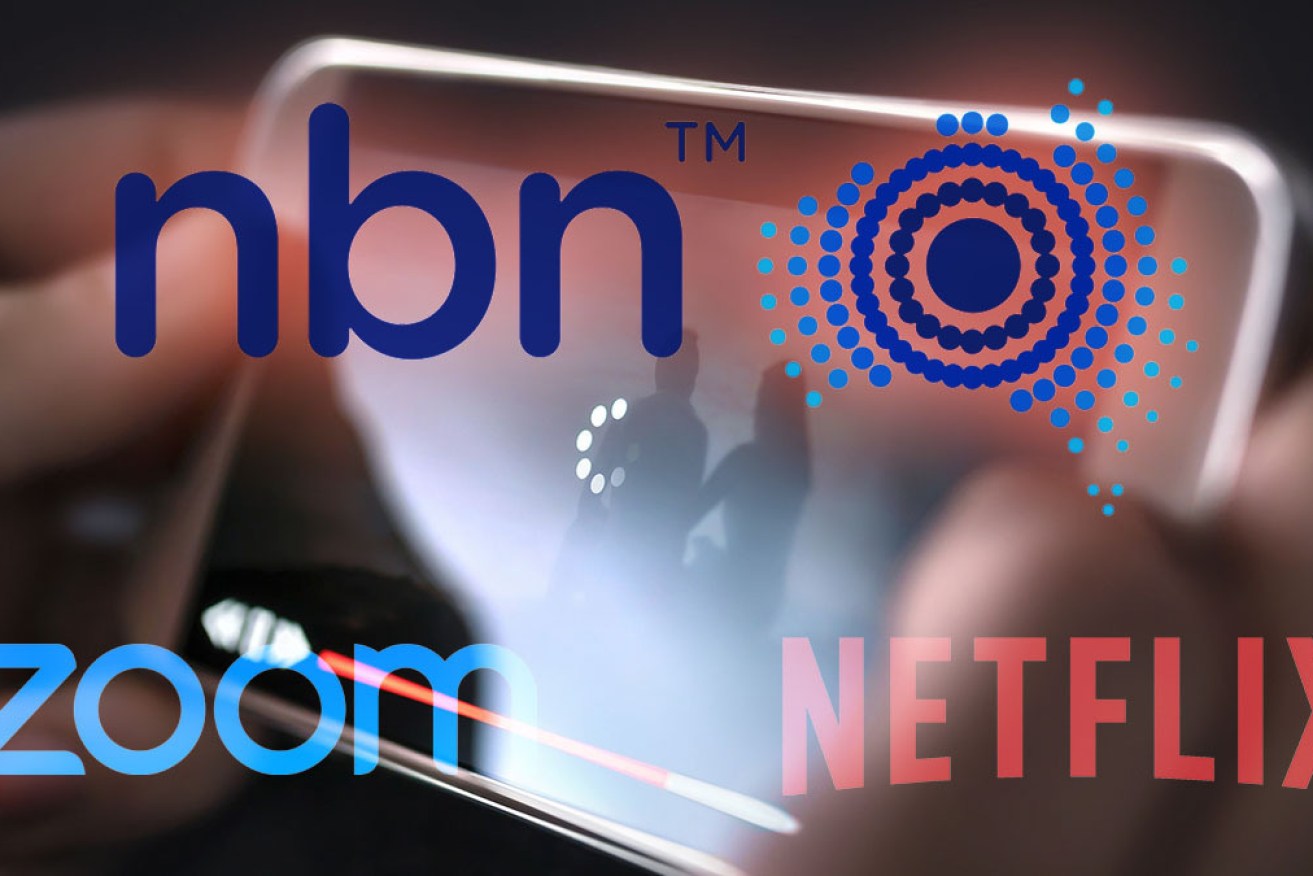From Netflix to Zoom: What consumers need to know about the NBN’s pandemic performance


Australians have flocked to video call platforms and streaming sites during the pandemic.
From Skype and Zoom to Netflix and YouTube, the coronavirus crisis has seen Australians turn to video call platforms and streaming services in record numbers.
Despite the pandemic-induced surge in demand, Australia’s national broadband network has performed well, largely thanks to emergency capacity boosts, a new report by the consumer watchdog found.
The Critical Services Report released on Wednesday examined the ability of NBN fixed-line broadband connections to support video-conferencing and streaming between February and May.
“Now the NBN roll-out has reached the majority of Australians, it is timely to look at the integral role broadband has played in supporting Australians at this critical time,” ACCC chair Rod Sims said.
Mr Sims praised NBN Co’s “decision at the outset of COVID-19 restrictions in March to offer retail service providers 40 per cent extra network capacity for no extra cost” as “a major factor in preserving the quality of broadband services for consumers”.
Without NBN Co’s move to boost capacity without raising prices the network would have struggled, Finder tech commentator Angus Kidman said.
“We needed to have those mitigations happen”, he said.
“If nothing had been done and everything had been left to work the way it does normally I’m sure we would have had much worse figures than we do.”
The NBN only coped “because we had those changes where providers were given more capacity and the prices weren’t changed”, Mr Kidman said.
It made the overall network work better, that’s really what made the difference.”
Streaming providers, including Netflix, YouTube, and Stan, also helped to avoid overloading the network by “adjusting their quality down a little bit…but I think the major factor was that [NBN Co] offered more capacity uplift for the network”, Mr Kidman said.
According to Finder’s Consumer Sentiment Tracker, a nationally representative study of 15,251 respondents, around 16 million – or 84 per cent of Australians – use streaming services.
Not everyone gets top quality, though, with 39 per cent reporting “regular dropouts” when watching videos online.
Of the people regularly encountering issues when streaming, 3.5 million said they constantly have problems when attempting to watch their favourite shows online.
Somewhat surprisingly, the report shows that streaming services such as Netflix and YouTube were typically downloading faster in May 2020 than during February 2020.
The NBN’s strong performance during the coronavirus pandemic is “a good sign for Australians”, Mr Kidman said, but how long it will last remains to be seen.
“It raises the interesting question of how easy it will be to switch that off and roll back that capacity increase they put in there,” he said.
It’s pretty clear that means [the NBN] will not perform as well…I think it could prove very difficult.”
Skype or Zoom? Best video call platforms
Whether it’s for work, telehealth, or simply chatting with friends and family, patchy video calls can be a major inconvienece.
The ACCC report compared the quality of video calls on Google Meet, Microsoft Teams, Skype, Webex, Zoom and GoToMeeting.
The figures showed that using a service with local infrastructure could make all the difference, with video conferencing applications hosted in Australia connecting more quickly than those hosted overseas.
Local hosting for video calls really matters,” Mr Kidman said.
Google Meet, Microsoft Teams, and Skype used Australian-based servers, and performed better due to lower latency, the ACCC found.
By contrast, GoToMeeting, Webex and Zoom recorded latency ten-times higher, or worse, due to their servers being located in Singapore, the Netherlands and United States respectively.
NBN 100, 50, or 25? How to choose the right NBN plan
When it comes to choosing the right NBN plan for your household, the report offered some useful insights.
While NBN 50 and NBN 100 plans both performed equally well in delivering streaming, lower speed tiers were conspicuously absent.
“They don’t mention the NBN 25 plan, and most providers don’t actively sell those anymore,” Mr Kidman said.
“But if you signed up for the NBN and have just stayed on the same plan, you could still be on a 25 plan.
I think there’s a clear message there: Don’t do that.
“I can’t see the point of being on the 25 plan, the performance is worse. In many cases, the pricing is pretty much identical [to higher speed plans].”
Mr Kidman said households with multiple people using the internet at once should consider upgrading to a higher speed tier.
“If you’ve got a few people at home doing things online, and you’ve got someone on a video call someone else is trying to do home education thing, that’s when being on 100 can really make a difference.
Where you’ve got a family or multiple people at home it’s really worth thinking about investing that extra $10 or $20 for dramatically better speeds.
“That’s what I’d be taking out of that. You don’t want to go on those lower speeds, and if you can afford to get the higher speeds it’s worth it.”
Update
On Friday, Zoom hit back at the ACCC’s report.
“Zoom has two data centers in Australia, and when Australian customers connect to them, it will provide notably lower latency than claimed by the ACCC report,” a spokesperson for the firm told The New Daily.
“Zoom was not consulted by the ACCC prior to the publishing and looks forward to engaging with them to learn more about their methodology.”








